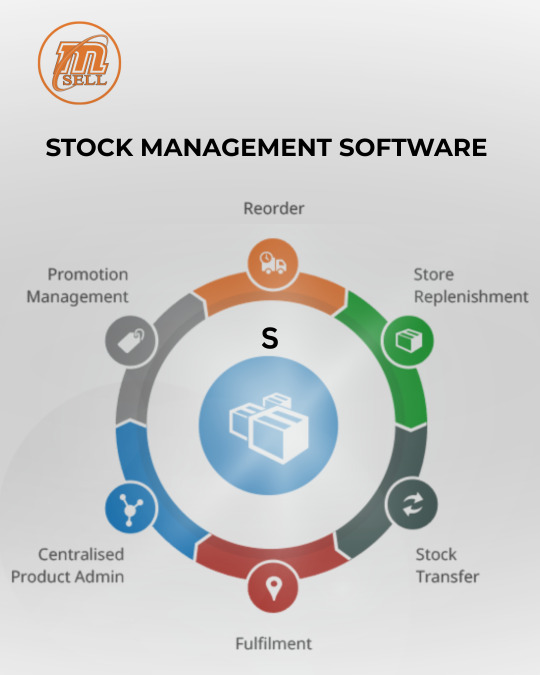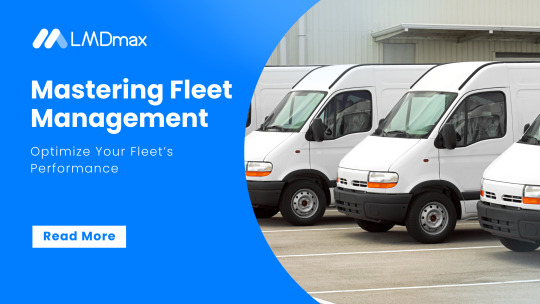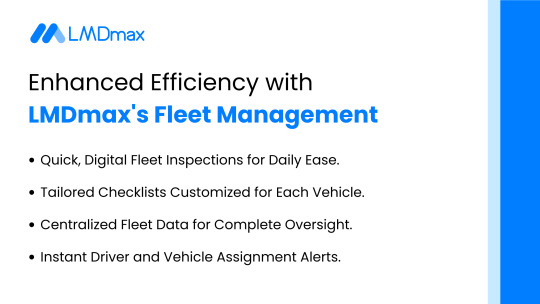#dispatch solutions
Explore tagged Tumblr posts
Text
Efficient Vehicle Tracking Solutions for Fleet Management
iTruck Dispatch offers cutting-edge vehicle tracking technology to streamline fleet management. With real-time GPS tracking, dispatchers can monitor vehicle locations, optimize routes, and ensure timely deliveries. The platform enhances operational efficiency, reduces risks like theft, and provides accurate data on vehicle status and estimated arrival times. Integrated with other fleet management features, iTruck Dispatch ensures businesses can improve logistics, boost productivity, and maintain seamless communication with drivers, all through an easy-to-use interface. This comprehensive solution is ideal for businesses aiming to enhance fleet visibility and operational control.

#tracking app#load management#dispatch software#carrier tracking#dispatch solutions#load tracking app#load tracking software
0 notes
Text

Dispatch Solutions is your go-to provider. With a focus on efficiency, reliability, and affordability, Dispatch Solutions ensures seamless supply chain operations, fast deliveries, and customer satisfaction.
For express delivery, warehousing, freight transportation, and tailored logistics services, Dispatch Solutions is the trusted partner to help your business thrive. Get in touch today for the best logistics services in Noida and across India!more help:- https://www.dispatch.co.in/
0 notes
Text
one action that i haven't seen a ton of people discuss online is writing a letter to the editor (not one specific editor, that's just what they're called). i'm thinking of palestine, but a lot of this can apply to other things. jvp has a letter to the editor guide here if u think you'd find that helpful. it's specific to jvp members from what i remember, so take what applies. individual papers will sometimes have their own sets of guidelines as well so be mindful of those. letters are generally more likely to make it to print when it comes to local papers, but you can also write letters to like. the nyt or wapo. you're just more likely to not get a response. as tools for social change, letters' purpose is to sway public opinion and pressure via institutions of media. i focus on local papers because, like with bds campaigns targeting college campuses, this stuff is going to start on a smaller scale first, but can and does build over time. think of one berkeley branch voting to divest very soon after another did first. this is like that to me.
i recommend seeing what other articles individual papers have about palestine just to get a feel for what might be most impactful for you to write about, or what still needs to be said. for local papers, you might want to tie it to your community in some way (and that might even be a requirement to get in the paper), so you can talk about, for example, how much money comes out of your specific area for israel, using uscpr's funding map. you can talk about protests in your area. if there are arab, palestinian, and/or muslim communities in your area, you talk about them. if there are medical facilities or lots of families in your area, you can talk about them. if there's a big tech presence in your area, you can relate it to that. education, youth, food, policing, etc. there's something. there are probably multiple lines of connection between your local community and palestine. you can also just respond to a published article or lte.
if you are writing a letter to the editor, it will be considered an opinion piece, so you can include opinions or things that may be seen as more subjective. check out other letters to the editor to get a sense for the type of tone/content/etc they are looking for. don't be afraid to break or bend those rules, but it's helpful to be aware of the general vibe of the paper, what's likely to get published, and what needs to be said.
what do you want your community to be talking about? what needs to be brought to their attention? what misconceptions need to be corrected? what issues do you want to put on the table? what do you want to add to the conversation? what's missing? what should be done about it?
if you can't make it to in-person actions, this can all be done online. and if you consider yourself good with words, this may be an area in which you're uniquely effective.
ps: citing other articles or sources is always helpful and is a way to platform other articles/books/texts that u think should be shared, although i don't think that's usually a requirement for ltes. if u can't think of one, ask around.
#palestine#sudan#drc#actions#haiti#writing#letter to the editor#at some point i want to write about one state solutions with reference to jewish currents' dispatches from gaza#and like. help lay the groundwork for that to be something that's at least considered a possibility by the general public#but there are also papers where it's like. i think i need to write about like this language of self defense and who is presumed to be#violent and argue that it is a genocide and things like that#so you know. gauge where you need to push etc. not that you necessarily need to respond to what's there#also there are more than likely multiple local papers in your area. you can write to more than one#personal stories also work for this#if you've written or made artwork idk if every paper is going to pick that up but consider submitting to a local litmag#congo#free palestine#also i'm not an organizer or a professional. these are just some things i've been thinking about
12 notes
·
View notes
Text
Stock Management Software

Stock Management Software at mSELL is designed to streamline and automate your stock and dispatch operations. It provides real-time tracking, accurate inventory control, and efficient dispatch management to help businesses reduce errors, improve productivity, and maintain optimal stock levels with ease.
#Stock Management#Management Software#Smart Stock Dispatch#mSELL Stock Solution#Efficient Stock Management
0 notes
Text
Courier Service in Delhi

Delivering Trust: Courier Services
It was the beginning of a new quarter, and Ananya, the operations manager at a mid-sized pharmaceutical distribution firm in Delhi, was going through reports when she got an urgent email.
A Pune hospital had put in an emergency bulk order for life-saving injectable medicines. Here was the catch: The shipment had to arrive within 24 hours, temperature-sensitive and well-packed. Delaying it would not just impact patient care, but also mar the company's reputation.
She looked at the current logistics plan of the company. Their routine transporter could not guarantee delivery within 48 hours — and that also without tracking in real time.
She didn't have time to wait.
Thus she promptly searched:
“Reliable B2B courier services near me.”
Enter Dispatch Solutions: A Courier Company for Critical Deliveries
Among the acquisitions was Dispatch Solutions Courier, a parcel delivery courier company that provided B2B parcel delivery — healthcare, manufacturing, and electronics companies. They provided next-day delivery, cold-chain support, digital tracking, and dedicated account managers for businesses.
Ananya made a call. In two minutes, she was talking to Ritika, who was a corporate logistics manager at Dispatch Solutions.
We understand the urgency," Ritika replied. "We have insulated packaging, certified handlers, and priority transit lanes from Delhi to Pune. If you confirm by 3 PM, we'll deliver the parcel to the hospital by 10 AM tomorrow.".
Ananya wasn't only impressed — she was relieved.
The Courier Workflow Begins
By 2:30 PM, a Smartly dressed Dispatch Solutions pick-up executive reached their warehouse. With trained accuracy, he checked the packaging, temperature controls, and documentation, and then sealed it into a secondary insulated box carefully.
At each step — pickup, sorting hub, dispatch — the package was scanned, dated, and traceable in Dispatch Solution's business dashboard. Ananya was getting real-time updates on her company portal, which included estimated delivery time and live route tracking.
By 8 PM, the parcel had left Delhi in a climate-controlled vehicle.
A Successful Delivery, A New Standard
At 9:42 AM the following morning, the procurement officer at the hospital electronically signed the digital receipt. The medicine had arrived — whole, secure, in time.
Ritika then called with a delivery confirmation call and sent an elaborate delivery report within an hour.
Ananya was impressed. This was not just a courier service — it was a business logistics partner that knew how critical this was.
The executive management subsequently decided to bring Dispatch Solutions on board as a preferred B2B courier service for all India's critical deliveries.
Why Businesses Rely on Professional Courier Services
B2B shipping is different from retail delivery. Time is money, compliance is mandatory, and reliability doesn't negotiate. The business world today needs courier operators that do more than merely deliver.
Below are the things the new B2B courier services like Dispatch Solutions need to offer:
Speed & Scale: Door-to-door collections in your city to next-day pan-India deliveries, they scale with your business.
Real-Time Tracking: Portal visibility, live route tracking, and delivery milestones for business customers.
Custom Solutions: Sensitive electronics, cold-chain pharmaceuticals, or high-value industrial products — they are experts in industry-specific care.
Account Management: Experienced managers familiar with your business process and anticipation of issues.
Compliance & Documentation: Particularly critical for regulated industries like pharma, finance, or defense.
Secure Chain of Custody: GPS marking, staff authentication, and controlled access for high-value or sensitive shipments.
Building a Logistics Backbone for Growth
Following that initial emergency shipment, Ananya collaborated with Dispatch Solutions to optimize the company's supply chain. Together, they built customized SOPs, charted regional hubs, implemented APIs for automated booking, and even pre-booked pickups for repeat orders.
That enabled her sales team to pledge shorter delivery timelines to customers, secure in knowing the behind-the-scenes was rock-solid.
A one-time delivery had turned into a long-term logistics arrangement — and a competitive advantage.
The Future of B2B Parcel Delivery
With more businesses growing their online presence, the need for quick, clear, and on-time B2B logistics is stronger than ever. Companies will no longer accept nebulous ETAs or missing shipments.
Rather, they look to courier partners that are an extension of their operations — firms that:
Meet their SLAs
Provide proactive communication
Leverage technology to eliminate human error
Understand the intricacies of inter-state taxes, compliance, and permits
Courier services are not an afterthought anymore. They are strategic partners for upstart companies.
From Vendor to Partner
Ananya's experience is not an isolated one. Across sectors — whether retail, pharma, technology, or manufacturing — companies are reassessing their delivery ecosystems.
They don't need a mere "courier" — they need a logistics partner that can grow with them, respond to urgency, and deliver consistently.
With the appropriate B2B courier firm, each shipment is more than a delivery — it's a promise fulfilled, a brand enhanced, and a customer maintained.
#Courier service in noida#courier service in delhi#courier service#dispatch solution#Courier service in india
0 notes
Text
If Communication Breaks Everything Slows Down
A small disruption in communication doesn’t just cause delays, it flips your entire operation. In last-mile delivery, every second counts. Fleet managers, drivers, dispatchers, and customers all rely on a seamless exchange of information to ensure that every delivery is made on time, every vehicle is running efficiently, and every shift is covered.
When communication falters, the result is a breakdown of not just the message but the system itself. When everything slows down, your entire operation feels the friction, from disrupted workflows and missed opportunities to frustrated drivers and unhappy customers.
Hence, we need to shift, because companies that leverage real-time communication tools are the ones that not only stay but thrive. Instant alerts, real-time shift updates, AI-powered support, and proactive maintenance reminders are the driving force behind resilient and efficient last-mile operations.
In this blog, we explore how advanced communication tools can streamline your entire last mile operation, ensuring everything flows seamlessly.
Why Communication is the Backbone of Fleet Efficiency?
When the communication chain is strong, the flow of operations remains uninterrupted. When it weakens, everything from driver performance to maintenance management starts to fall apart. Consider a fleet operating without real-time communication tools. A driver is late to a shift change, unaware of the updated route, or misses a critical safety warning. Small gaps in information can lead to massive operational inefficiencies, delays, unscheduled repairs, and frustrated clients.
But the game changes when businesses integrate AI-driven chatbots, automated alerts, and real-time support. These tools ensure that critical information reaches the right person at the right time, preventing downtime before it even starts.
1) The Power of Instant Alerts: Reducing Risk and Maximizing Efficiency
When a vehicle’s preventive maintenance alert doesn’t trigger on time, you face unforeseen disruptions. This is the crux of the issue: small delays in information lead to big setbacks. With AI-driven alerts and automated notifications you can change this dynamic. They instantly notify managers about upcoming maintenance tasks, or last–minute schedules, ensuring that you’re always a step ahead. Hence, this is not just about avoiding errors, it’s about building a proactive system that mitigates risks before they become problems. The more proactive you can be in your communication, the more efficient and agile your fleet will become, leading to a reduction in downtime and improved service delivery.
2) Shift Changes & Scheduling: The Link Between Timeliness and Efficiency
One of the biggest sources of inefficiency in last mile operations is miscommunication during shift changes. A delayed driver or last-minute schedule change can throw off the entire day’s operation. However, with auto assign feature, vehicles are allocated to drivers with immediate notifications, ensuring real time awareness. Plus, drivers and dispatchers are immediately informed of any updates, ensuring any shift transitions happen seamlessly and without confusion.
3) Coaching Drivers with Real-Time Feedback
Driver performance is the heart of last mile efficiency. However, performance issues don’t always arise in the moment, they often develop over time without immediate intervention. Real-time coaching messages, powered by performance tracking, allow managers to identify and address issues in the moment, whenever a violation occurs.
Instead of waiting until the end of the day to review performance, automated coaching alerts and E-warnings communicate instantly when a driver deviates from safe driving practices. This immediate feedback doesn’t just improve driver safety; it also enhances driver performance, compliance and overall efficiency.
4) The Importance of Centralized Communication: Creating a Single Source of Truth
A fragmented approach to communication leads to confusion, errors, and inefficiencies. By centralizing all operational data, fleet managers and dispatchers can access a unified view of activities in real-time. For example, when a dispatcher needs to identify the top-performing driver, an AI chatbot can quickly analyze performance data and provide the results instantly. This centralized approach streamlines workflows and enables faster, more informed decision-making.
The Roadmap to Seamless Communication in Operations
To truly transform your last mile, it’s crucial to integrate communication tools that foster instant action and proactive decision-making. Here are the actionable steps you can take:
Integrate AI-Powered Alerts: Automate real-time notifications for shift changes, fleet maintenance, and emergencies to reduce downtime.
Centralize Communication Tools: Bring all communication onto a single platform, ensuring every member of your team has access to the latest data and updates.
Leverage Performance-Driven Coaching: Use real-time data to coach drivers on improving performance, safety, and delivery efficiency.
Invest in Real-Time Support Systems: Implement 24/7 AI-powered chatbots and automated tools to provide instant support for dispatchers and drivers.
Streamlined Communication is the Key to Efficiency
When communication flows smoothly, everything else follows. At LMDmax, we’ve seen that integration of instant alerts, AI chatbots, and performance monitoring doesn’t just minimize problems but it also ensures your fleet can handle any challenge that arises, effortlessly.
Thus, efficient last mile delivery management hinges on the ability to communicate effectively. By integrating the right tools, you can build an industry that doesn’t just respond to issues but avoids them. Is your business communication keeping pace with your operational needs? Start optimizing today.
#last mile delivery#logistics#final mile delivery#last mile business#driver performance#transportation#dispatcher#fleet management solution#amazon delivery
0 notes
Text
Which is the best transportation tracking in US
Falco Matics is a leading provider of GPS Vehicle Tracking solutions, offering advanced technology and personalized services to cater to the unique needs of various businesses. GPS Vehicle Tracking utilizes global positioning system (GPS) technology to monitor and manage fleets by providing real-time data on vehicle location, status, and driver behavior. This level of visibility enables companies to make informed decisions, ensuring better control over their operations.
The core benefit of GPS tracking lies in its ability to improve fleet efficiency. Businesses can reduce fuel consumption, minimize idle time, and ensure timely deliveries by tracking routes and optimizing logistics. The system also enhances driver safety by monitoring driving behavior and offering alerts for speeding, harsh braking, or unauthorized vehicle use.
Falco Matics’ cutting-edge solutions go beyond simple transportation tracking. Their GPS automatic fleet tracking system is designed to notify all stakeholders—drivers, fleet managers, and dispatch teams—through an integrated communication network. This automated system ensures that every step in the process is transparent and that immediate action can be taken when necessary.
The technology plays a crucial role in streamlining fleet operations by reducing manual interventions and increasing accountability. Whether it’s a small business with a handful of vehicles or a large enterprise with a nationwide fleet, GPS tracking helps maintain operational efficiency, reduce risks, and save costs.
Moreover, Falco Matics emphasizes tailored solutions, recognizing that different industries—such as logistics, construction, and public transport—have distinct requirements. Their GPS solutions are flexible, scalable, and compatible with existing infrastructure, ensuring seamless implementation.
In today’s fast-paced business environment, where real-time data and quick response are key, Falco Matics’ GPS Vehicle Tracking systems empower companies to operate smarter, safer, and more efficiently. By integrating advanced tracking tools with smart notifications, they help businesses achieve better fleet visibility, improve productivity, and ensure reliable service delivery.
0 notes
Text
Fleet Management System for Modern Transportation Needs

Transform the way you manage your vehicles. A fleet management system is essential for ensuring efficiency, compliance, and profitability. Logistifie’s platform gives you real-time insight into your entire fleet—tracking location, performance, fuel usage, and maintenance schedules. The intuitive dashboard lets you make informed decisions while keeping everything under control. It’s built for transport companies looking to grow their fleet and minimise operational risks. Improve productivity and lower costs with a smart fleet management system.
#dispatch system#online taxi dispatch system#cab dispatch system#software development#software#transportation#driverapp#fleet management software#fleet management solution#driver app#passenger app
0 notes
Text
Online Fulfilment Solutions | Fast & Cost‑Effective Shipping
#ecommerce‑fulfilment#same‑day‑dispatch#order‑processing#shipping‑solutions#online‑business#customer‑delivery
0 notes
Text

💫 Happy Navratri – Day 6 from Dispatch Solutions! 💫
On this sacred day, we worship Maa Katyayani, the symbol of courage and righteousness. May her divine strength empower your journey and guide you towards success and growth. 🌟💪
At Dispatch Solutions, we celebrate the spirit of Navratri by staying committed to strength, service, and innovation every step of the way.
🌐 Visit us: www.dispatch.co.in 📞 Call: +91-9313-388-388
#HappyNavratri #Day6 #MaaKatyayani #DispatchSolutions #FestiveVibes #NavratriCelebration #LogisticsWithSpirit
1 note
·
View note
Text
How to Build an Uber-Like App: Your Ultimate Step-by-Step Guide?
With the rise of the on-demand economy, ride-sharing apps like Uber have become an integral part of urban transportation. If you’re interested in developing your own Uber-like app, whether to cater to a specific niche or to compete in the ride-sharing market, follow this detailed guide to make your project a success.
1. Craft Your Vision
1.1 Clarify Your Goals
Define the purpose of your app. Are you targeting daily commuters, luxury travelers, or a specialized market like healthcare transport?
Determine what makes your app unique compared to existing services.
1.2 Identify Your Audience
Conduct market research to understand the needs and preferences of your potential users.
Develop detailed user personas to guide the design and functionality of your app.
2. Conduct Comprehensive Market Research
2.1 Analyze Competitors
Examine leading ride-sharing apps like Uber and Lyft, as well as local competitors.
Note their strengths, weaknesses, and user feedback to understand industry standards and gaps.
2.2 Spot Industry Trends
Investigate current trends such as green transportation solutions, autonomous vehicles, and new business models.
Keep track of technological advancements that could influence the ride-sharing landscape.
3. Define Your App’s Features
3.1 Essential Features
User Profiles: Secure sign-up and login options, along with profile management capabilities.
Ride Booking System: Streamlined booking process, vehicle selection, and scheduling options.
GPS Tracking: Real-time location tracking for both drivers and passengers using reliable GPS technology.
Payment Processing: Integration with payment gateways like Stripe or PayPal for seamless transactions.
Driver Dashboard: Tools for drivers to manage ride requests, track earnings, and update their status.
Feedback System: Rating and review features for drivers and riders to ensure quality service.
3.2 Advanced Features
In-App Messaging: Secure communication between drivers and passengers.
Ride History: Users can view their past trips and receipts.
Fare Calculator: Estimate ride costs before confirming bookings.
Emergency Button: Safety feature for immediate assistance.
4. Select the Right Technology Stack
4.1 Frontend Development
Mobile Development: Decide between native apps for iOS and Android or cross-platform frameworks like React Native or Flutter for efficiency.
4.2 Backend Infrastructure
Server-Side Solutions: Opt for robust frameworks like Node.js, Ruby on Rails, or Django to handle app logic and data.
Database Options: Use databases such as MongoDB, PostgreSQL, or Firebase to manage user and ride information effectively.
4.3 API Integrations
Mapping Services: Integrate with Google Maps API or Mapbox for location services and navigation.
Payment Systems: Implement payment processors like Stripe, PayPal, or Braintree for secure transactions.
5. Design an Engaging UI/UX
5.1 Design Principles
Wireframes and Prototypes: Create initial wireframes and interactive prototypes to visualize the user flow and interface.
User-Centric Design: Focus on creating a simple, intuitive design that provides a seamless user experience on both iOS and Android devices.
5.2 Usability Testing
Conduct tests with real users to gather feedback on the design and make necessary adjustments to improve usability.
6. Develop Your App
6.1 Development Phases
Frontend Development: Build the app’s user interface, ensuring it’s responsive and visually appealing.
Backend Development: Develop the server-side components, including APIs and databases, to support app functionality.
6.2 Integration
Combine frontend and backend systems to ensure smooth operation. Test integrations with third-party services for maps and payment processing.
7. Thorough Testing
7.1 Types of Testing
Functionality Testing: Ensure all features operate correctly and as intended.
Performance Testing: Evaluate the app’s performance under various conditions, including high user traffic.
Security Testing: Implement rigorous security measures to protect user data and prevent breaches.
Usability Testing: Assess the app’s ease of use and overall user satisfaction.
7.2 Beta Testing
Release a beta version to a select group of users to identify and address potential issues before the full launch.
8. Launch and Promote
8.1 Launch Strategy
Plan a phased launch to manage initial user load and gather feedback.
Prepare for a full-scale launch with a well-crafted marketing strategy.
8.2 Marketing Techniques
Digital Campaigns: Leverage social media, search engine optimization (SEO), and paid advertising to increase visibility.
Local Outreach: Offer special promotions or discounts to attract users in your initial launch area.
Partnerships: Collaborate with local businesses or influencers to boost your app’s reach.
9. Post-Launch Support and Optimization
9.1 Monitor and Analyze
Use analytics tools to track app performance, user behavior, and engagement metrics.
Collect and analyze user feedback to identify areas for improvement.
9.2 Continuous Updates
Regularly update the app to fix bugs, enhance performance, and introduce new features.
Stay responsive to user feedback and adapt to emerging trends and market demands.
Conclusion
Creating an Uber-like app involves detailed planning, development, and ongoing refinement. By following this step-by-step guide, you can build a robust and competitive ride-sharing platform tailored to meet user needs and stand out in the market. For professional guidance and support in bringing your app to life, visit TaxiAppz.com and discover how we can help turn your vision into reality.
0 notes
Text
NEMT Dispatch Software Solution for Medical Transportation
Discover Trip Wizard's NEMT Dispatch Software Solution, designed to enhance efficiency in managing medical transportation services. Streamline your scheduling, optimize routes, and ensure timely rides for patients with our user-friendly dispatch software. Ideal for healthcare providers and transportation companies, our solution simplifies operations and boosts reliability. Choose Trip Wizard for an effective way to handle your medical transportation needs.
0 notes
Text
Reliable Logistics Solutions with FF Dispatch – On Time, Every Time
Trust FF Dispatch for reliable and efficient logistics solutions. We ensure your cargo is delivered on time with a focus on professionalism and peace of mind. Our team is dedicated to simplifying your freight operations, keeping your deliveries on schedule, and providing top-quality service. Experience seamless logistics with FF Dispatch by visiting https://www.dispatchff.com/

0 notes
Text
Efficient Solutions with One Call Ticket Management for Streamlined Operations
Explore seamless operations and optimized workflows with Norfield's "One Call Ticket Management" solutions. At Norfield Development Partners, we focus on providing a fully integrated ticket management system that enhances safety, communication, and compliance for businesses managing underground utility projects. Our "One Call Ticket Management" service simplifies complex processes, ensuring that all utility locate requests and notifications are handled accurately and on time.
Our user-friendly system is designed to automate key aspects of ticket management, from receiving and processing One Call tickets to dispatching locate technicians and generating compliance reports. By integrating with existing operational platforms, Norfield’s solutions minimize manual data entry, improve data accuracy, and help avoid costly errors associated with delayed or mishandled tickets.
Norfield’s "One Call Ticket Management" solution is built to empower utility operators, municipalities, contractors, and other stakeholders with greater control over their locate requests and responses. Featuring real-time tracking, automated workflows, and data synchronization, our system promotes operational efficiency while ensuring all stakeholders are informed throughout each stage of the ticket lifecycle.
For businesses looking to streamline operations, reduce risk, and enhance service quality, Norfield's "One Call Ticket Management" provides a comprehensive answer. Our solutions not only facilitate faster response times but also improve compliance with local and state regulations, helping to avoid fines and operational disruptions.
#One Call ticket management#utility locate requests#Norfield ticket management solutions#underground utility project management#locate technician dispatch#ticket lifecycle tracking
0 notes
Text
Mastering Fleet Management: Unlock Your Fleet’s Full Potential

Managing a fleet can feel like solving a puzzle with missing pieces. Between daily vehicle inspections, assignments, and communication, staying organized becomes a challenge. But what if you could simplify all of this? Imagine handling fleet management solutions from seamless inspections to automated shift assignments—all from a single, powerful platform.
In the ever-evolving world of last-mile delivery, efficient fleet management is the game-changer. It’s no longer a choice but a necessity. Let’s dive into how fleet management software can revolutionize your operations, keeping your business ahead every single day.
1. Simplify Fleet Inspections in Minutes
Traditional paperwork slows down pre- and post-trip inspections, leading to inefficiencies. Enter paperless digital inspections: a faster, smarter solution. Drivers can complete inspections directly on their mobile devices, ensuring accuracy and storing data digitally for quick access. No more digging through piles of paper; now, you’ll have a comprehensive overview of your fleet’s condition anytime you need it.
2. Capture Real-Time Insights on Vehicle Health
A picture is worth a thousand words, especially when it comes to fleet maintenance. With fleet management solutions, drivers can upload real-time photos and videos. This visual documentation enhances transparency, streamlines maintenance, and provides an undeniable record for later review.
3. Automate Driver and Vehicle Assignments
Assigning drivers and vehicles shouldn’t be a logistical headache. With automated notifications, drivers receive real-time SMS updates with all the details they need—vehicle assignments, schedules, and more. This seamless process eliminates confusion and gets your fleet moving faster.

4. Gain Complete Oversight with Centralized Data
Modern fleet management software offers a centralized hub where all your fleet data assignments, inspections, vehicle usage is stored. This fosters accountability, simplifies audits, and provides valuable insights for optimizing fleet performance.
5. Boost Fleet Efficiency with Advanced Tools
Adopting fleet management solutions doesn’t just save time—it saves money. Automating inspections, vehicle assignments, and tracking reduces human error and administrative work, saving significant time and costs.
In the end, fleet management software not only streamlines operations but also gives last mile businesses a competitive edge by cutting costs and enhancing productivity. With real-time data, you can predict and prevent costly repairs. Efficient scheduling and maintenance tracking ensure vehicles spend more time on the road and less time in the garage.
Transform Your Fleet Operations Today
Why let inefficiencies slow you down? With LMDmax’s fleet management solutions, you gain tools that help you organize, track, and optimize your operations effortlessly. From paperless inspections to real-time notifications, everything you need is at your fingertips.
Get in Touch with Us:
Website: https://lmdmax.com/
Phone: +1-908-293-6500
Email: [email protected]
LMDmax – Driving Excellence in Last-Mile Delivery.
#logistics#last mile delivery#dsp#final mile delivery#dispatch#transportation#fleet management market#fleet management solution#last mile solutions#amazon delivery
1 note
·
View note